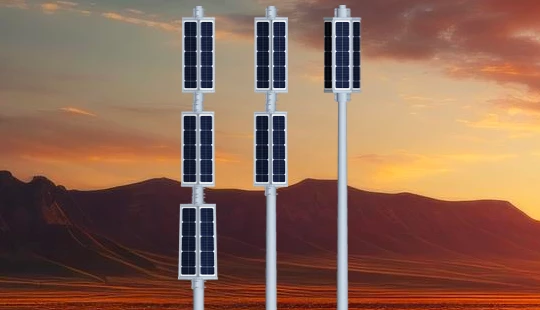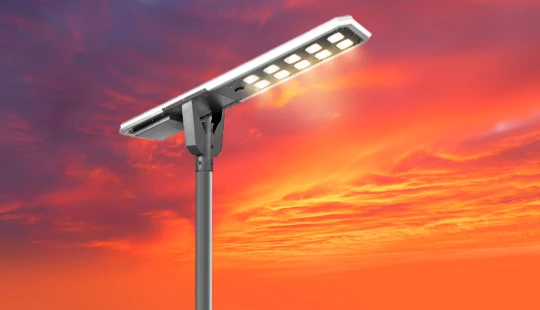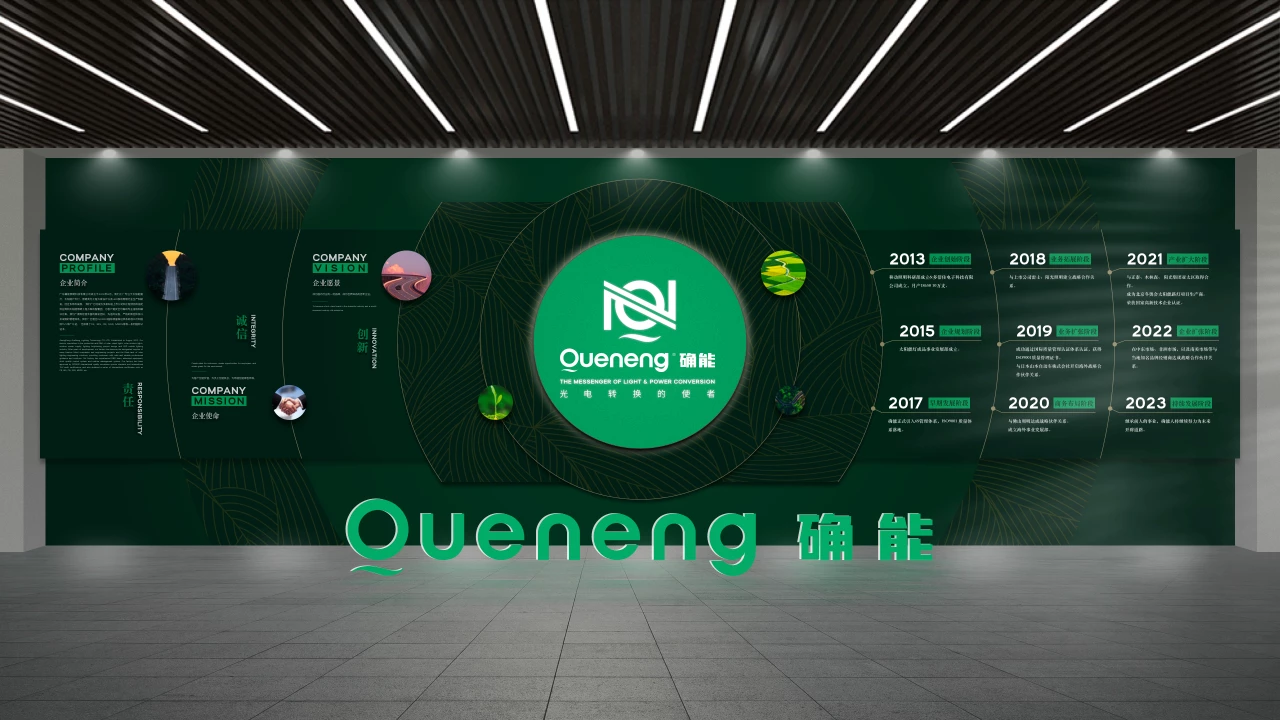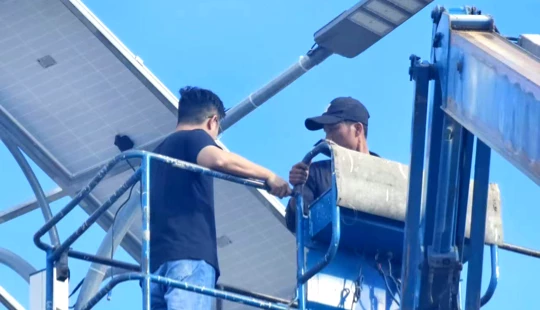solar charge controller types | Quenenglighting Expert Guide

Optimizing Solar Lighting: A Deep Dive into Solar Charge Controller Types
Understanding Solar Charge Controller Types: PWM vs. MPPT
Solar charge controllers are the unsung heroes of off-grid solar power systems, including solar lighting installations. Their primary role is to regulate the voltage and current coming from solar panels to the battery bank, preventing overcharging and deep discharging, thereby extending battery life and ensuring system stability. For professionals in the solar lighting industry, understanding the two main types – Pulse Width Modulation (PWM) and Maximum Power Point Tracking (MPPT) – is fundamental for efficient procurement and deployment.While both perform the essential function of battery management, their underlying technologies and efficiencies differ significantly, impacting system performance and cost. Making the right choice hinges on balancing budget constraints with performance requirements for specific solar lighting applications.
How Do PWM Solar Charge Controllers Work, and When Are They Best Suited for Solar Lighting?
PWM (Pulse Width Modulation) charge controllers operate by rapidly switching the connection between the solar panel and the battery on and off. When the battery reaches a certain voltage, the PWM controller 'tapers' the charging by reducing the pulse width, effectively slowing the charge. This method brings the battery voltage up to the solar panel's voltage, but it does not account for the maximum power point of the solar panel.Key Characteristics & Best Use Cases for Solar Lighting:
- Simplicity and Cost-Effectiveness: PWM controllers are generally less expensive to manufacture, making them a cost-effective choice for smaller, less demanding solar lighting projects.
- Efficiency: Typically 70-80% efficient. They are most efficient when the solar panel's nominal voltage closely matches the battery bank's nominal voltage (e.g., 12V panel with a 12V battery).
- Ideal Applications: Best suited for smaller solar lighting systems, such as garden lights, pathway lights, or simple standalone streetlights where panel-to-battery voltage mismatch is minimal, or where cost is the primary driver over absolute efficiency. For instance, a 10W panel charging a 12V battery will pair well with a PWM controller.
- Limitations: They cannot optimize power if the panel voltage significantly exceeds the battery voltage, leading to wasted energy, especially in colder temperatures when panel voltage increases.
Why Choose MPPT Solar Charge Controllers for High-Performance Solar Lighting Systems?
MPPT (Maximum Power Point Tracking) charge controllers are a more advanced solution. They continuously track the maximum power point (MPP) of the solar array, converting excess voltage into additional current. This allows the solar panel to operate at its optimal power output regardless of temperature or battery state of charge.Key Characteristics & Benefits for Solar Lighting:
- Superior Efficiency: MPPT controllers can achieve efficiencies of 92-99%, significantly outperforming PWM controllers, especially in scenarios where panel voltage is much higher than battery voltage (e.g., using 60-cell solar panels designed for grid-tie systems with a 12V or 24V battery bank). This translates to 10-30% more energy harvest compared to PWM controllers, particularly under suboptimal conditions like cloudy days or high temperatures.
- Flexibility: They offer greater flexibility in panel selection, allowing for higher voltage panels to be used with lower voltage battery banks, simplifying wiring and reducing power losses over long cable runs.
- Enhanced Performance: Critical for commercial solar streetlights, intelligent parking lot lighting, or remote power systems where maximum energy harvesting and reliable operation are paramount. For example, a 200W solar panel paired with a 24V battery bank will yield significantly more power with an MPPT controller.
- Advanced Features: Many MPPT controllers include sophisticated features like multi-stage charging, data logging, remote monitoring, and programmable load control, which are vital for complex solar lighting deployments.
Key Factors to Consider When Selecting a Solar Charge Controller for Commercial Solar Lighting Projects
When procuring solar charge controllers for professional solar lighting applications, several critical factors must be evaluated beyond just PWM vs. MPPT:- Voltage Compatibility: Ensure the controller's input voltage range accommodates your solar panel array's open-circuit voltage (Voc) and its output voltage matches your battery bank's nominal voltage (12V, 24V, 48V, etc.).
- Current Rating: The controller's maximum charging current must be sufficient for your solar array's short-circuit current (Isc) plus a safety margin (typically 25%). For example, a 200W, 12V nominal panel will produce approx. 11A (200W/18Vmp).
- Battery Type Support: Verify compatibility with the battery chemistry being used (e.g., Flooded, Sealed Lead-Acid, Gel, AGM, Lithium-ion – LiFePO4 requires specific charging algorithms).
- Load Control: Many solar lighting controllers integrate load control functions, allowing programmable lighting schedules (dusk-to-dawn, dimming, motion sensing). This is crucial for energy management in streetlights.
- Environmental Protection (IP Rating): For outdoor solar lighting, the controller must have an adequate IP rating (e.g., IP65 or IP67) to protect against dust and water ingress.
- Temperature Compensation: Essential for battery longevity, as battery charging voltage requirements change with temperature. Most quality controllers include this feature.
- Communication and Monitoring: For larger projects, controllers with RS485, CAN bus, or Bluetooth/Wi-Fi connectivity for remote monitoring, data logging, and system diagnostics are invaluable.
- Certifications: Look for certifications like CE, RoHS, UL, which indicate adherence to safety and quality standards.
Addressing Common Challenges and Ensuring Longevity in Solar Charge Controller Deployment
Proper installation and maintenance are key to the longevity and performance of solar charge controllers in lighting systems. Common challenges include:- Improper Sizing: Undersized controllers can lead to failure, while oversized ones add unnecessary cost. Always calculate current and voltage requirements carefully.
- Heat Dissipation: Controllers generate heat. Ensure adequate ventilation, especially for higher current units. Mounting in direct sunlight or enclosed, unventilated spaces can reduce lifespan.
- Wiring Mistakes: Incorrect polarity, loose connections, or undersized wiring can lead to efficiency losses, overheating, or system damage. Always follow manufacturer's instructions and local electrical codes.
- Environmental Exposure: Even with high IP ratings, consistent exposure to extreme temperatures, humidity, or corrosive environments can degrade components over time. Regular inspection is recommended.
- Firmware Updates: For advanced MPPT controllers, keeping firmware updated can improve performance, add features, and fix bugs.
- Quality vs. Cost: While cost is a factor, opting for extremely cheap, unbranded controllers often results in lower efficiency, shorter lifespan, and potential safety risks. Invest in reputable brands known for reliability and customer support.
By carefully considering these factors and implementing best practices, solar lighting professionals can procure and deploy solar charge controllers that ensure optimal performance, extended battery life, and reliable operation of their solar lighting systems for years to come. The right charge controller isn't just a component; it's the brain of your off-grid solar lighting solution.

Have more questions about our products or services?
The latest hot news you might like

Discover how solar panels power street lights, exploring the technology behind solar energy conversion, storage systems, and how solar-powered street lights are revolutionizing urban and rural lighting solutions.

Learn how AC Solar Hybrid Street Lights work, their advantages, disadvantages, system behavior in low-sunlight conditions, and why hybrid technology is ideal for regions with unstable sunlight.

Municipalities around the world are increasingly adopting solar-powered streetlights as part of their urban development strategies. Rising energy costs, the need for sustainable infrastructure, and government green initiatives are driving cities to switch from traditional street lighting to advanced LED solar streetlights.
Queneng Lighting provides municipalities with cost-effective, energy-efficient, and durable solar lighting solutions, ensuring safe and sustainable public spaces.
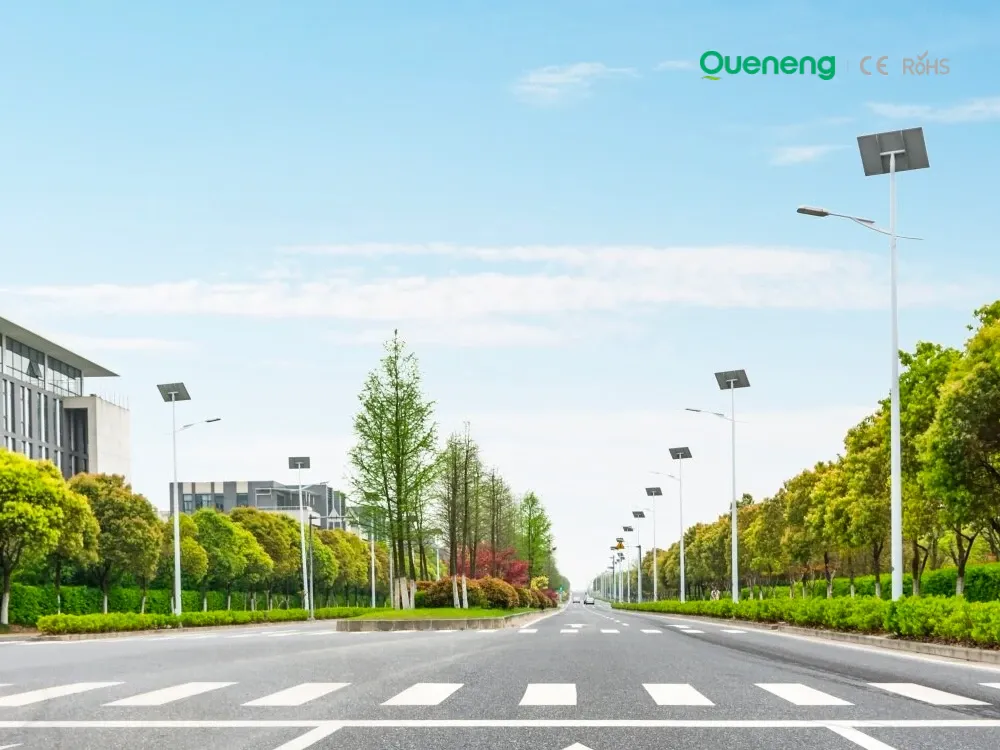
In recent years, the purchase of solar streetlights for municipalities has become a growing trend across the globe. Local governments are under pressure to reduce public expenditure, promote green energy, and create safer communities. Solar streetlights provide a reliable, cost-effective, and sustainable solution that meets these needs. Queneng Lighting, as a leading solar street lighting manufacturer, has supported multiple municipal projects worldwide with customized and energy-efficient solutions.
FAQ
Solar Street Light Luyan
Can Luyan solar street lights function in areas with limited sunlight or cloudy weather?
Yes, Luyan solar street lights are designed to function reliably even in areas with limited sunlight or during cloudy weather. The high-efficiency solar panels can capture and store energy even in low-light conditions, ensuring that the lights will still provide illumination during cloudy or rainy days. The system is equipped with a battery that stores enough energy to keep the lights running throughout the night, regardless of weather conditions, making it suitable for diverse climates.
APMS system
Does the APMS system support extremely cold environments?
Yes, APMS has ultra-low temperature control capability, allowing it to operate normally at temperatures as low as -50°C, ideal for high-latitude regions and extreme climates.
Battery Performance and Testing
What is a temperature rise experiment?
Solar Street Light Luyi
What are the key features of Luyi solar street lights?
Luyi solar street lights feature advanced LED technology paired with high-efficiency solar panels. They offer bright, reliable illumination while consuming minimal energy. The lights are designed with durable materials to withstand harsh outdoor conditions and come equipped with motion sensors, adaptive brightness control, and smart monitoring capabilities for enhanced energy savings.
Battery and Analysis
What are the advantages of lithium polymer batteries? What are the advantages?
2) Can be made into a thin battery: with a capacity of 3.6V and 400mAh, its thickness can be as thin as 0.5mm;
3) Batteries can be designed in various shapes;
4) The battery can be bent and deformed: the polymer battery can be bent up to about 900 degrees;
5) Can be made into a single high-voltage battery: a battery with liquid electrolyte can only produce a high-voltage polymer battery by connecting several batteries in series;
6) Since it is liquid-free, it can be combined into multiple layers within a single chip to achieve high voltage;
7) The capacity will be twice that of a lithium-ion battery of the same size.
Solar Street Light Chuanqi
What makes Chuanqi solar street lights energy-efficient?
Chuanqi solar street lights are equipped with high-efficiency solar panels that maximize energy collection even in less-than-ideal weather conditions. They also use low-energy-consuming LED lights that provide bright illumination without excessive power consumption. Additionally, the lights feature automatic on/off functionality, ensuring they only use energy when needed.


Queneng's Luzhou Solar Street Light provides sustainable, energy-efficient outdoor LED lighting. Powered by solar energy, it's a cost-effective and eco-friendly solution for illuminating streets and pathways. A reliable and durable LED solar street light.

Queneng’s Solar Street Lights are designed to provide reliable, energy-efficient lighting for streets, parks, and other outdoor spaces.

Experience reliable outdoor illumination with our smart solar street light, a perfect combination of advanced technology and eco-conscious design.

Queneng's Luqiu Innovative Solar Street Light offers energy-saving, durable outdoor lighting. This solar power street light provides a reliable and eco-friendly solution for illuminating your streets and pathways.

Queneng's Luxian Reliable Solar Street Light offers energy-saving LED lighting for outdoor use. This durable, solar-powered street light provides reliable illumination, reducing energy costs and environmental impact. A perfect solution for sustainable outdoor lighting.
If you would like more information about Queneng solar lighting solutions, please send us a message by filling out the form below. Our professional team will get back to you within 24 hours!
Rest assured that your privacy is important to us, and all information provided will be handled with the utmost confidentiality.
Schedule a Meeting

Book a date and time that is convenient for you and conduct the session in advance.
Have more questions about our products or services?

